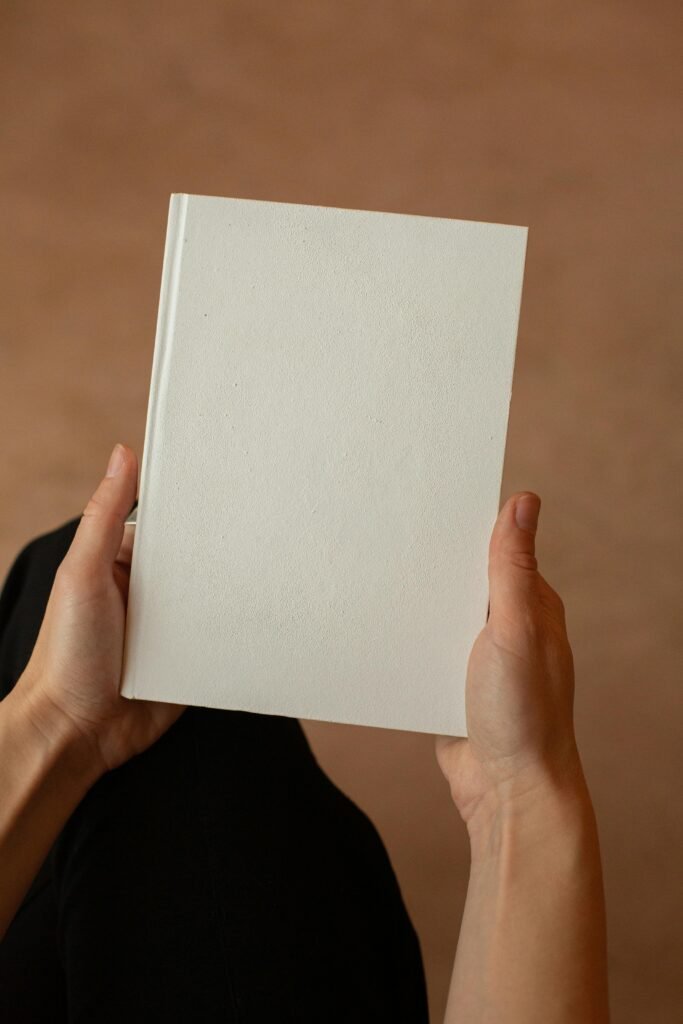Are you ready to step into the exciting world of wallet design? Get ready to be captivated by the innovative materials and textures that are revolutionizing the way we carry our valuables. In this article, we will explore the fascinating realm of emerging materials in wallet design, from cutting-edge fabrics to sustainable alternatives. Discover how these new materials not only contribute to the aesthetics of wallets but also enhance their functionality and durability. So, grab your favorite wallet and let’s embark on a journey to uncover the future of this everyday essential.

This image is property of images.pexels.com.
Introduction to Emerging Materials in Wallet Design
Wallets have come a long way in terms of design and functionality. In recent years, there has been a significant shift towards the use of emerging materials in wallet design. These materials not only offer unique textures and aesthetics, but also contribute to sustainability and address ethical concerns. In this article, we will delve into various types of emerging materials that are making waves in the world of wallet design, their benefits, and their impact on sustainability.
The Evolution of Wallet Materials
Traditionally, wallets were primarily made from leather. Leather wallets have always been popular for their durability and classic look. However, with advancements in technology and growing concerns about animal welfare and environmental impact, alternative materials have emerged as viable options for wallet manufacturing.

This image is property of images.pexels.com.
The Importance of Emerging Materials in Wallet Design
Choosing the right material for a wallet is crucial as it determines not only its durability and functionality, but also its overall impact on the environment. Emerging materials in wallet design allow for innovative features, enhanced sustainability, and customization options that cater to individual needs and preferences. These materials are revolutionizing the way wallets are designed, manufactured, and used.
Leather Alternatives
Vegan Leather
Vegan leather, also known as synthetic leather or faux leather, is a popular alternative to animal-derived leather. It is primarily made from polyurethane or PVC, and can closely mimic the look and feel of genuine leather. Vegan leather offers several advantages, including cruelty-free production, lower environmental impact, and wider availability of design options.
Recycled Materials
Another emerging trend in wallet design is the use of recycled materials. Manufacturers are increasingly incorporating recycled plastics, fabrics, and other materials into the production of wallets. This not only helps reduce waste and conserve resources, but also results in unique textures and patterns that add a contemporary touch to wallet designs.
Plant-based Materials
Plant-based materials, such as pineapple leaf fibers (Piñatex) and apple leather, are gaining popularity as sustainable alternatives to traditional leather. These materials are derived from agricultural byproducts and offer similar properties to genuine leather. Wallets made from plant-based materials provide a cruelty-free option for eco-conscious consumers.

This image is property of images.pexels.com.
Smart Fabrics and Electronics
Water-resistant Fabrics
With the increasing demand for wallets that can withstand various weather conditions and accidental spills, water-resistant fabrics have emerged as a game-changer in wallet design. These fabrics are specially treated to repel water and protect the contents of the wallet, ensuring durability and longevity.
RFID-blocking Technology
As technology advances, so does the need for security. RFID-blocking technology has become a must-have feature in modern wallets. By incorporating special shielding materials, RFID-blocking wallets protect your credit cards and personal information from unauthorized scanning and theft.
Built-in Trackers
Losing a wallet can be a nightmare, but emerging materials in wallet design offer a solution. Some wallets now come with built-in trackers that synchronize with your smartphone. These trackers use Bluetooth Low Energy (BLE) technology to help you quickly locate your wallet using a mobile app, providing peace of mind and convenience.
Sustainable Materials
Bamboo
Bamboo is a rapidly renewable resource that is gaining popularity in wallet design. Its strength, lightweight nature, and natural aesthetics make it an excellent choice for sustainable wallets. Bamboo wallets not only offer a unique and eco-friendly alternative, but also contribute to the reduction of deforestation and carbon emissions.
Cork
Cork is another sustainable material that is finding its way into the world of wallet design. Harvested from the bark of cork oak trees, cork is an environmentally friendly option due to its ability to regenerate. Wallets made from cork are lightweight, water-resistant, and have natural antimicrobial properties, making them an ideal choice for eco-conscious consumers.
Hemp
Hemp is a versatile plant that has been used for centuries for its various benefits. Wallets made from hemp fibers are durable, eco-friendly, and have a distinct texture. In addition to its sustainability factor, hemp wallets also offer resistance to UV rays, mold, and mildew, making them a great choice for outdoor enthusiasts.
Metal Wallets
Aluminum
Aluminum wallets have gained popularity for their sleek and modern appearance. They are lightweight, durable, and offer excellent protection for your cards and cash. Aluminum wallets also have RFID-blocking capabilities, ensuring the safety and security of your personal information.
Titanium
Known for its strength and durability, titanium is an emerging material in the world of wallets. Titanium wallets are lightweight, resistant to corrosion, and offer a minimalistic and luxurious appeal. With its exceptional durability, a titanium wallet can last a lifetime.
Carbon Fiber
Carbon fiber is a high-performance material commonly used in industries such as aerospace and motorsports. In recent years, carbon fiber wallets have become popular due to their unique aesthetics and strength-to-weight ratio. Wallets made from carbon fiber are not only sleek and stylish, but also offer excellent protection for your cards and cash.
Innovative Features
Coin Dispensers
Coins can often be a hassle to carry around and can make wallets bulky. To address this issue, some wallets now come with built-in coin dispensers. These clever designs allow you to conveniently store and access your loose change, ensuring a clutter-free and organized wallet.
Card Ejectors
Traditional wallets can be bulky and difficult to navigate when it comes to accessing your cards. Wallets with card ejectors solve this problem by incorporating mechanisms that allow you to easily pop out your cards with the push of a button. This feature not only adds convenience but also helps protect your cards from damage.
Built-in Power Banks
In today’s digital age, keeping your devices powered up is essential. Some wallets now offer built-in power banks, allowing you to charge your smartphone or other electronic devices on the go. This innovative feature merges fashion with functionality, ensuring you never run out of battery power.
Combining Materials
Leather and Metal Hybrids
To cater to different tastes and preferences, wallet designers have started combining materials to create unique designs. Leather and metal hybrids have become increasingly popular, offering a harmonious blend of traditional elegance and modern aesthetics. These wallets often feature a leather exterior with metal accents, combining the best of both worlds.
Fabric and Sustainable Material Blends
Blending fabrics with sustainable materials is another trend gaining momentum in wallet design. By combining fabrics such as canvas or nylon with sustainable materials like cork or hemp, designers are able to create wallets that are not only visually appealing but also eco-friendly and durable.
Customization Options
Engraving and Embossing
Personalization is key when it comes to choosing a wallet that reflects your individual style. Engraving and embossing options allow you to add your initials, name, or even a special design to your wallet. This customization gives your wallet a unique touch and makes it truly yours.
Modular Design
Modular wallets offer a high degree of customization and versatility. These wallets consist of separate modules or compartments that can be rearranged or added to according to your needs. With a modular design, you can create a wallet that suits your specific organizational requirements.
Interchangeable Covers
Interchangeable covers are a fun and practical customization option in wallet design. With these wallets, you can easily swap out the cover to match your outfit or mood. This feature allows you to have multiple looks with just one wallet, minimizing the need for multiple wallets and reducing waste.
Impact on Sustainability
Reducing Environmental Impact
The use of emerging materials in wallet design contributes to sustainability by reducing the demand for animal-derived leather and minimizing the use of non-renewable resources. Recycled materials, plant-based materials, and sustainable alternatives help lessen the environmental impact of wallet production, making them a responsible choice for eco-conscious consumers.
Addressing Ethical Concerns
Emerging materials provide ethical alternatives to leather, which alleviates concerns about animal welfare in the fashion industry. By opting for vegan leather or plant-based materials, consumers can make a conscious choice to support ethical practices and contribute to a more compassionate and sustainable future.
Future Trends in Wallet Design
Integration of Biometric Technology
As technology continues to advance, integrating biometric technology into wallets is predicted to be a major trend. Biometric authentication systems, such as fingerprint scanning or facial recognition, can provide enhanced security and convenience. These features may soon become standard in wallets, ensuring the safety of your personal and financial information.
Incorporating Flexible Displays
Flexible display technology has the potential to revolutionize the way we interact with our wallets. Imagine being able to view your bank balance or transaction history directly on your wallet’s display. This technology could also enable interactive features such as touch-sensitive buttons or customizable digital designs, taking wallet design to a whole new level.
Exploring Nanomaterials
Nanotechnology is an emerging field that offers exciting possibilities for wallet design. Nanomaterials, with their unique properties and capabilities, can enhance durability, strength, and even self-healing capabilities of wallets. As further research and development are conducted, we can expect to see wallets that utilize nanomaterials for superior performance and longevity.
In conclusion, the world of wallet design is constantly evolving, thanks to the utilization of emerging materials. These materials not only offer a wide range of benefits, from enhanced sustainability to innovative features, but also cater to individual preferences with options for customization. As consumers become more conscious of environmental impact and ethical concerns, the demand for wallets made from alternative materials will continue to grow. The future of wallet design holds great potential for even more advanced technologies and materials, promising exciting developments that will redefine our everyday carry.
